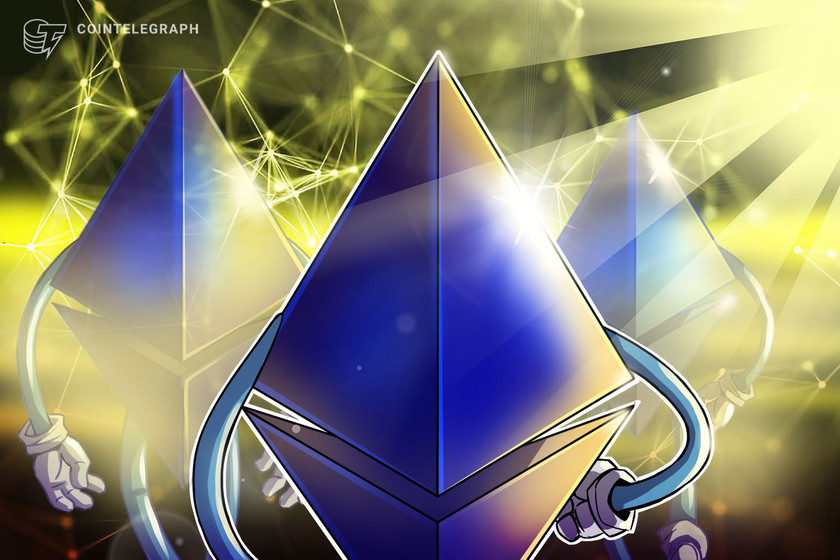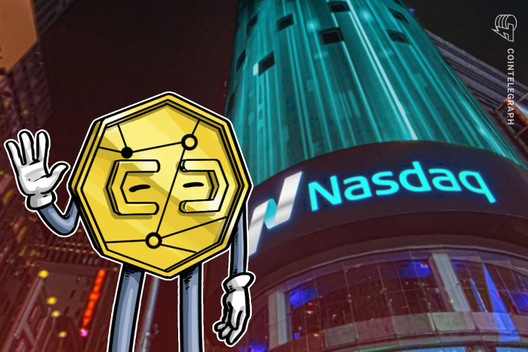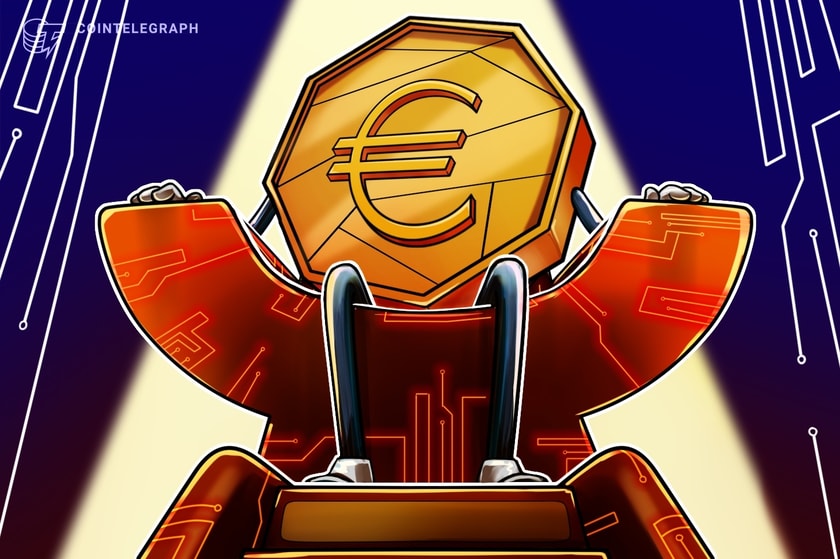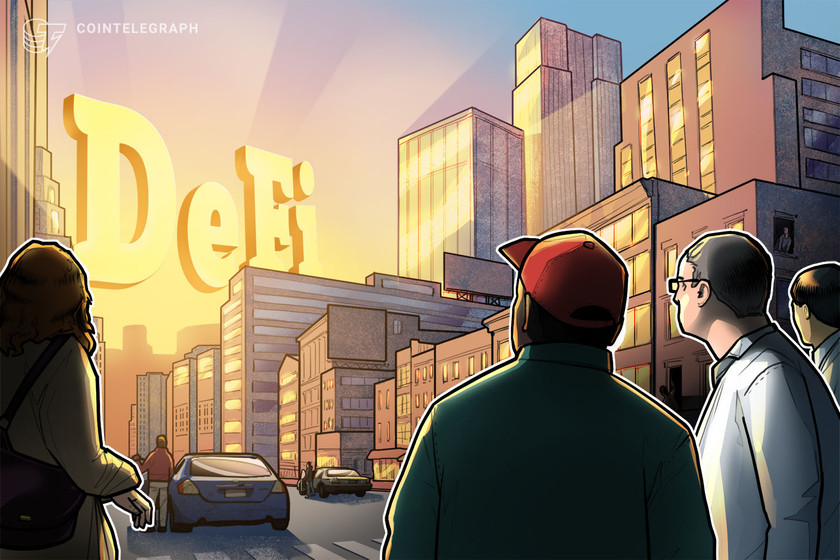Too little, too late? Ethereum losing DeFi ground to rival blockchains
2021 has been a great year for Bitcoin (BTC) and crypto in general. However, Ethereum and the decentralized finance, or DeFi, sector have outshined other niches of the cryptocurrency space, dazzling the community with enormous growth in terms of popularity, engagement and sheer volume, with the total value locked currently sitting at around $56 billion, according to DappRadar.
The nonfungible token, or NFT, space is also seeing unprecedented growth. Many believe 2021 is shaping up to be the year of NFTs. However, DeFi continues to thrive, especially on the Ethereum blockchain where developer and user activity surpasses that of any other blockchain.
However, it’s no secret that Ethereum is currently at a decisive point. Congestion and high gas fees are plaguing the network and making decentralized exchanges, or DEXes, almost impossible to afford for common users who want to make small to medium-sized trades. Even simple transactions can cost more than $10. Banks aren’t so jealous anymore.
DeFi is looking for alternatives
On March 3, SushiSwap, the popular Uniswap fork known for its contentious inception through a vampire mining attack, announced that the DEX had added multiple Ethereum alternatives to its platform, deploying contracts on xDai, Moonbeam, Binance Smart Chain, Polygon (previously called Matic) and Fantom.
SushiSwap has received a lot of negative criticism from the community and even from Hayden Adams, founder of Uniswap, who has expressed little appreciation for the fork and even less for the conduct of its pseudonymous founder, Chef Nomi, who exited the project early on with a pocket full of tokens, only to return them soon after. In a recent Twitter thread, Adams stated:
“I’ve seen tons of comments about sushi being a high quality dev team building a differentiated product. While I really wish this was true, I’ve seen no evidence of this whatsoever to date. Just liquidity mining and marketing so far.”
Nevertheless, the project has seen major success, being the second biggest DEX in terms of volume, according to Dune Analytics. Now, SushiSwap is providing users with new alternatives to Ethereum and allowing them to move away from the huge gas fees that have recently become a norm, even if reluctantly so.
It’s not just SushiSwap
It seems that projects are generally looking for alternatives even though they don’t intend to fully give up on Ethereum. While these are not “moving away” from Ethereum, they are adding multiple alternatives to their platforms, which will be a major game changer for some of these blockchains, especially Binance Smart Chain, which seems to be the most popular choice.
Balancer recently announced it will be deploying ports onto Moonbeam and Polkadot. Furthermore, exchange aggregator 1inch recently added support for Binance Smart Chain. Users can change networks with the simple click of a button and enjoy lower fees and faster transaction times.
Although 1inch has added support for BSC, the team doesn’t seem to be moving away from Ethereum anytime soon. Sergej Kunz, co-founder of 1inch, told Cointelegraph:
“We don’t plan to move completely away from Ethereum. Our expansion to BSC is just an add-on as we’ve gotten a lot of requests from the 1inch community because there’s a lot of money and activity on BSC.”
Projects haven’t removed Ethereum as the main option for their platforms, and while Binance has been standing out among the rest, Ilya Abugov — an advisor at DappRadar, an aggregator of decentralized application statistics — believes that the future will hold a multitude of options for DeFi users. He told Cointelegraph: “This is an indication that the multi-chain future is much more likely. BSC projects have achieved significant enough TVL where it makes sense for new projects to consider BSC as a viable ecosystem.”
Binance is certainly the most popular alternative at the moment. Recently, DappRadar also added support for Binance Smart Chain in its portfolio tool, but there are other projects that are growing and becoming viable alternatives, and these may begin to gain more traction as time passes. Abugov continued:
“There is also Polkadot, Flow and a number of others that are showing viable ecosystems. Before projects were almost forced to build in ETH, now they have an actual choice. As bridges become more developed this trend should become stronger.”
Layer-two options are also gaining traction
While Ethereum alternatives like BSC and others are becoming popular, layer-two options are also being integrated at lightning speed. SushiSwap chief technology officer Joseph Delong noted that the decentralized exchange is planning additional future deployments, including on Optimism.
SushiSwap would be just one of the latest to do so. Other projects such as Synthetix, a decentralized derivatives trading platform, are also experimenting with layer-two options, the most popular of which seems to be Optimism. Kain Warwick, founder of Synthetix, told Cointelegraph:
“Every project currently on Ethereum will need to adopt a Layer 2 solution. There are fast-moving teams that now have considerable treasuries and highly skilled engineers, and allowing more users to interact with a protocol is a huge incentive to move quickly into scalable solutions.”
Will Ethereum 2.0. restore trust, or will it be too late?
While Ethereum is currently facing scalability issues and becoming very hard to use, Ethereum 2.0 is currently in development, and its staking and sharding features will allow the experience to return to normal for the common user and improve on many other aspects. Not only will the network be able to handle more transactions without congestion, which results in lower fees, but staking will also improve on the wasteful proof-of-work model that requires miners to burn electricity to validate the network.
However, the current issues experienced in Ethereum are opening doors for others to become popular alternatives. This means that Eth2 may not be enough to regain Ethereum’s previous market share, according to Abugov: “ETH 2.0 is significantly far away that competing blockchains can establish their own ecosystems. When ETH 2.0 launches it will likely be just one of the options for project teams.”
While projects are now exploring other options, Ethereum’s network effect is still standing strong. Developers don’t seem to be moving away from the blockchain, but they appear willing to look for additional options that can give Ethereum 2.0 developers more time to perfect the upcoming launch and present users with new, exciting options for DeFi interaction.









